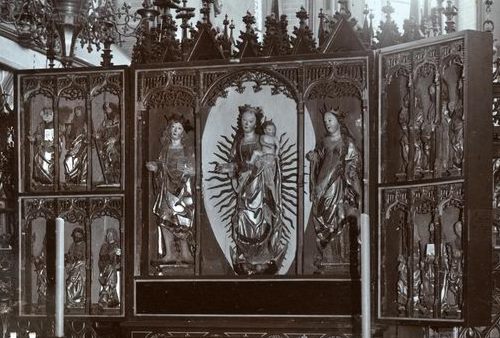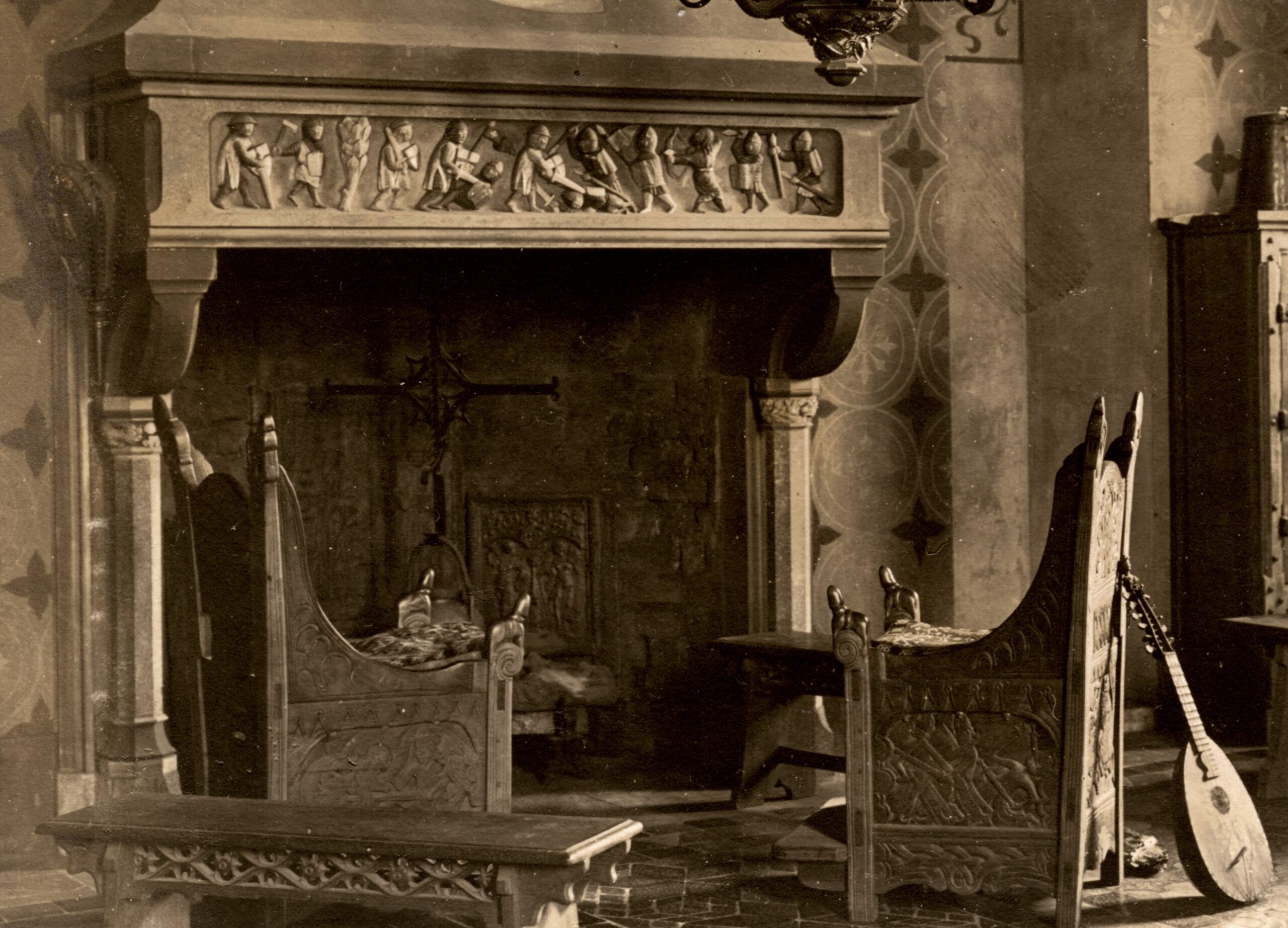The volume publication with the translation of the Reports, preceded by the texts presented at the conference on December 18, 2020, is already physically present within the walls of the Museum.
Today’s post is the last one promoting this publication, and since its release is closely related to the research project on the former castle resources carried out by the Museum as part of the Polish Ministry of Culture and National Heritage program Researching Polish War Losses, we will discuss its significance for this type of research.
The reports are the primary source for organizing knowledge about the structure of the pre-war collection of the Malbork Castle. It is from them that we learn about classifying items into specific groups and collections. No wonder then that the employees of the first team of museologists established in 1961 at the Castle Museum used the Reports to find out what these collections looked like, both on a general level and in cases of recognizable monuments.
Although it was not possible to undertake provenance research sixty or fifty years ago, not only for political reasons, but also because the issue of war losses was not yet fully developed in the areas other than organized activity of the German occupation authorities, our predecessors collected information about the former Malbork collections using only their individual resources.
One of the oldest evidence of such an approach is a note from 1968, made on the margin of the Report for the period from January 1, 1926 to December 31, 1927 (Fig. 1). The content of the note clearly shows the interest in and taking up the subject of the old collections and their post-war fate by the employees of the Malbork Castle Museum. In this particular case, the way of moving the altar setting from Wedesbüttel (Fig. 2) from Malbork to the parish church in Olsztyn.
While we develop the topic of searching for individual “specimens” from the former collections of the castle in Malbork, possible thanks to the publication of information about them or their image in the Reports, it should be emphasized that sometimes the message from this source is the only trace of the presence of a given item in the old resource. Then it is the starting point for the search for further messages enabling basic identification of the item.
For example, a gothic chest and a table bench, described as Lower Saxony, delivered in January 1909 by a carpenter Ostermann from Hanover, which the originals were in the Regional Museum in Hanover, mentioned only in the News of the Royal Board of Reconstruction of the Castle in Malbork in West Prussia in the Furniture section on the activity in the years 1909, 1910 and 1911, especially commissioned copies of well-known artful originals, in items 1 and 2, remain a mystery at this stage of research. Without knowing their appearance, it is impossible to classify them into any of the groups covered by our research: losses or dispersed monuments. Without knowing the form, we will not determine whether they were recorded in the photos from the castle interiors. Thus, the Report in this case shows the direction for a query in Hanover, where it may be possible to determine which antique furniture served as a model for the copies made in 1908 and sent to Malbork at the beginning of the following year.
The same should be done for the following items in this section:
5-6. two Gothic pine peasant tables with a maple top, by A. Marschall from Karlshorst, from the Museum of Decorative Arts in Berlin (April 1911).
7-8. Italian walnut wardrobe and chest, by A. Marschall of Karlshorst, from the Emperor Frederick Museum, Berlin (VII 1910).
9-10. two carved gothic mirror frames, by A. Marschall of Karlshorst, from the Germanic Museum in Nuremberg and the Figdor Collection in Vienna (August 1911).
In a few cases, we can only presume that the exchanged items are identical to those recorded in archival photos. This is the case of the donations for the department of cultural and historical items noted in the same Report: the guild staff of the Malbork tailors’ guild ˗ journeymen Walter John and Anton Lemke (November 1909) and the Lower Saxony chimney boiler hook ˗ major and officer – engineer at Meyer Square from Malbork (July 1911). Perhaps their shape (Fig. 3-4) was recorded in the photos in the Castle Reconstruction Albums (Marienburg Baujahr).
Evidence of the effective identification of war losses with the method of combining information from the Reports with the preservation of the image in Reconstruction Albums can be mentioned in the News of the Royal Board for the Reconstruction of the Castle in Malbork in West Prussia on the activity in the years of construction 1912 to 1916, a mention of a donation, classified as a “cultural and historical object”, “iron stove plate from 1665 with original sin”, from the parish priest Zimmermann from Żuławki. In this case, we can be absolutely sure that the description and image of the object are identical, thanks to the presence of the date and the identification of the iconographic decoration of the monument, provided in both compiled sources.
(by B. Butryn)




